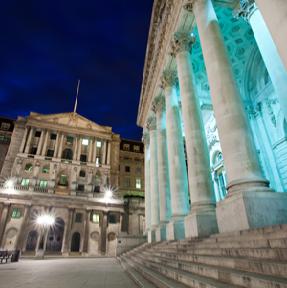Compliance
Clock Ticks Down Towards LIBOR's End - UK Regulator

The LIBOR system of interbank rates is ending this year, and a new regime will take over which framers hope is more liquid and, crucially, harder to manipulate. Many financial products that private banks and wealth managers use have been referenced from LIBOR.
The Financial
Conduct Authority recently reminded financial markets that
the way of setting market interest rates, known as LIBOR, will
end and be replaced by a new system starting from January next
year.
The LIBOR system was rocked almost a decade ago by traders at
banks manipulating the figures used for daily calculations of
inter-bank rates, in a bid to win profits. LIBOR has been used
for years to set rates for savers and borrowers, including the
products employed by wealth managers. The formal LIBOR system
dates back 45 years, although its origins go as far back as the
1960s.
“Tens of thousands of firms have been preparing for this, with
the encouragement, support – and occasional nagging – of
authorities here and overseas. We have had the common aim of
minimising disruption from the retiring of a benchmark rate
referenced, even at the beginning of this year, in an estimated
$265 trillion of contracts,” Edwin Schooling Latter, director of
markets and wholesale policy and wholesale supervision, at the
FCA, said in a speech last week.
The official said the largest slice of these contracts are in
interest rate derivatives, but it also includes trillion-dollar
sums of bonds and securitisations, loans, mortgages and other
products.
While much of the trading and wholesale side of financial markets
have prepared for the new regime – called SONIA – there have been
concerns that the wealth sector is not ready for the changeover,
particularly at a time when markets continue to be roiled by
forces such as the pandemic. (See
here and
here for articles on the topic.)
The new system has been designed so that the underlying market
from which rates are drawn is more liquid and harder for players
to manipulate, so its framers hope. LIBOR gives the cost of
borrowing for a range of different periods (one month, three
months, six months, and so on); SONIA is a single rate that
measures the cost of overnight borrowing. A problem with LIBOR,
according to a Bank of England report in 2018, is that it is no
longer liquid. LIBOR is often used to hedge the general level of
interest rates, for which it is inefficient given that it
includes a term bank credit component, the BoE said.
Schooling Latter said that SONIA already dominates certain
markets, showing that the system is ready to take over. In the
sterling swaps market, 89 per cent of volume traded in November
referenced SONIA. By end-November, cleared SONIA swaps
outstanding, at 59 per cent of the total, exceeded cleared LIBOR
swaps outstanding, at 41 per cent.
The commercial loans market was the last sterling market to move
decisively from LIBOR to SONIA. But data collected from the banks
show few cases of new use of Sterling LIBOR after end-March 2021,
Schooling Latter said.
